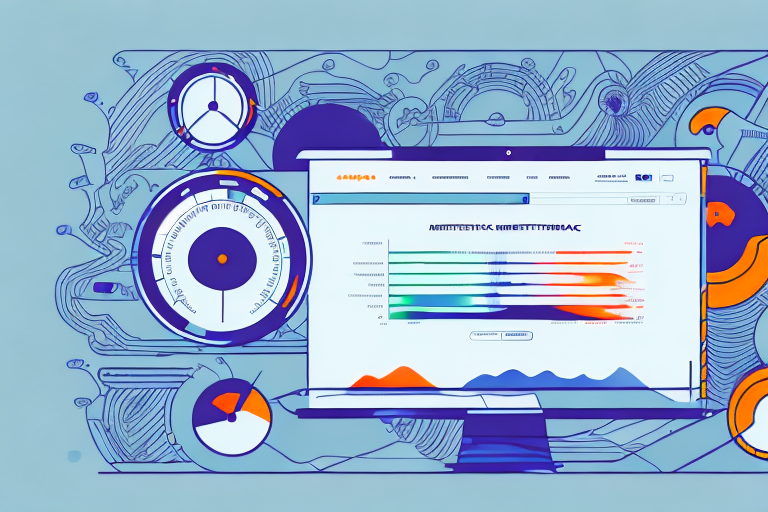Optimizing Your E-commerce Website for Peak Performance
In the competitive world of e-commerce, your website serves as the primary gateway to your business. It's essential not only for displaying your products but also for providing a seamless shopping experience that converts visitors into loyal customers. This guide delves into effective strategies to enhance your website's speed, usability, and conversion rates, ensuring your online store thrives.
1. Importance of Website Optimization for E-commerce
Website optimization is critical for e-commerce success. Studies show that even a one-second delay in page load time can result in a 7% reduction in conversions (Akamai). Additionally, 79% of online shoppers are unlikely to return to a site after a poor experience (Source).
Optimizing your website goes beyond speed. It involves enhancing user experience, improving navigation, and ensuring your site is informative and visually appealing. These factors collectively build trust and loyalty, driving repeat business and higher sales.
Moreover, effective search engine optimization (SEO) increases your website's visibility, attracting more potential customers through improved search rankings. Techniques such as keyword research, meta tag optimization, and quality link building are essential components of SEO.
2. Key Metrics for Analyzing Website Performance
Page Load Times
Fast-loading pages are crucial. Tools like Google PageSpeed Insights can help you measure and improve your site's speed.
Bounce Rates
A high bounce rate indicates that visitors are leaving your site quickly, often due to poor user experience or irrelevant content. Aim to reduce bounce rates by enhancing site relevance and engagement.
Conversion Rates
Tracking conversion rates helps you understand how effectively your website turns visitors into customers. Utilize tools like Google Analytics to monitor and improve this metric.
Traffic Sources
Understanding where your traffic comes from—be it search engines, social media, or referrals—can help you tailor your marketing strategies for better results.
3. Understanding and Targeting Your Audience
Audience Research
Identify your target audience's demographics, preferences, and pain points. Tools like Pew Research provide valuable insights into consumer behavior.
Personalized Content
Tailor your website content to address the specific needs and interests of different customer segments. Personalized experiences can significantly boost engagement and conversions.
Responsive Design
Ensure your website is accessible and user-friendly across all devices. Responsive design enhances the user experience, which is essential as mobile commerce continues to rise.
4. Enhancing User Navigation for Higher Conversions
Intuitive Menu Structure
Organize your navigation menus logically, using clear and concise labels. An intuitive structure helps users find products quickly, reducing frustration and increasing the likelihood of purchase.
Mobile-Friendly Navigation
With the surge in mobile shopping, it's imperative to have a navigation system that works seamlessly on smaller screens. Consider implementing hamburger menus or collapsible sections for better mobile usability.
5. Crafting Compelling Product Descriptions
Highlighting Unique Features
Focus on what sets your products apart. Clearly outlining unique features and benefits can persuade customers to choose your products over competitors.
Storytelling Techniques
Use storytelling to connect with your audience on an emotional level. This approach can make your products more relatable and desirable.
Clear Calls-to-Action
Incorporate strong and clear calls-to-action (CTAs) that guide customers toward making a purchase. Phrases like "Buy Now" or "Add to Cart" can effectively drive conversions.
6. Utilizing High-Quality Visuals
Product Images
High-resolution images that showcase multiple angles of your products help customers make informed purchasing decisions. Implement zoom features to allow closer inspection.
Product Videos
Videos demonstrating your products in use can enhance understanding and engagement, leading to higher conversion rates.
Visual Consistency
Maintain a consistent visual style across your website to create a cohesive and professional appearance that reinforces your brand identity.
7. Leveraging Social Proof to Build Trust
Customer Reviews and Ratings
Displaying genuine customer reviews and ratings can significantly influence purchasing decisions. Encourage satisfied customers to leave positive feedback.
Testimonials and Case Studies
Showcase testimonials and detailed case studies to demonstrate the real-world benefits of your products, enhancing credibility and trust.
Trusted Badges and Certifications
Featuring badges from reputable organizations or certifications can reassure customers of your site's security and the quality of your products.
8. Improving Search Functionality
Prominent Search Bar
Ensure the search bar is easily accessible on every page. A visible and user-friendly search function helps users find products quickly, reducing frustration.
Advanced Search Features
Incorporate features like auto-complete suggestions and filters to enhance the search experience. These tools help users refine their searches and locate desired products efficiently.
Optimizing Search Algorithms
Ensure your website's search algorithm delivers accurate and relevant results. Regularly update and fine-tune search parameters based on user behavior and feedback.
9. Streamlining the Checkout Process
Simplified Checkout Steps
Minimize the number of steps required to complete a purchase. A streamlined checkout process reduces cart abandonment rates and increases sales.
Multiple Payment Options
Offer a variety of payment methods to cater to different customer preferences. Including options like credit cards, PayPal, and digital wallets can enhance convenience.
Transparent Pricing and Shipping
Clearly display all costs, including shipping and taxes, early in the checkout process. Transparency builds trust and prevents unexpected costs that may deter customers from completing their purchases.
10. Continuous Improvement Through Analytics
Using Analytics Tools
Implement tools like Google Analytics and Hotjar to track key performance metrics and user behavior on your website.
Data-Driven Decision Making
Analyze the data collected to identify trends and areas for improvement. Use these insights to make informed decisions that enhance your website's performance.
A/B Testing
Conduct A/B tests to experiment with different website elements, such as headlines, CTAs, and layouts. Testing helps determine what resonates best with your audience, leading to optimized performance.
By implementing these strategies and continuously monitoring your website's performance, you can create an optimized e-commerce platform that attracts more visitors, engages customers, and drives sustained growth.




















